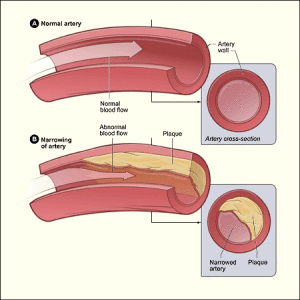What is the difference between angina and a heart attack?
The heart is a very complex organ, made up of many specialised structures designed to work in unison. The heart can suffer from a variety of problems with the most common being a heart attack and angina.
So what is the difference between a heart attack and angina?
What is a Heart Attack?
A heart attack is also commonly referred to as a Myocardial infarction (MI) and is usually caused by a blood clot that stops blood flow within a heart (coronary) artery. ‘MI’ simply means that part of the heart muscle suddenly loses its blood supply and without prompt treatment this can lead to permanent damage to the affected part of the heart.
During aa heart attack, a coronary artery or one of its smaller branches is suddenly blocked.
The part of the heart muscle supplied by this artery loses it’s blood (and oxygen) supply and is at risk of permanent damage unless the blockage is quickly undone.
What is angina?

Angina is caused by narrowing of one or more of the coronary arteries leading to a reduced blood supply to a part (or parts) of your heart muscle.
The blood supply may be enough when you are resting, however the heart muscle needs more blood and oxygen when it works harder (e.g. walking fast or climbing stairs) and the heart rate increases to deliver the extra blood.
If the extra blood that the heart needs during exertion cannot get past the narrowed coronary arteries, the heart ‘complains’ with pain, similar to cramp.
The narrowing of the arteries is normally caused by atheroma which can be described as fatty patches or plaques that develop within the inside lining of arteries, similar to water pipes that get furred up with scale.





